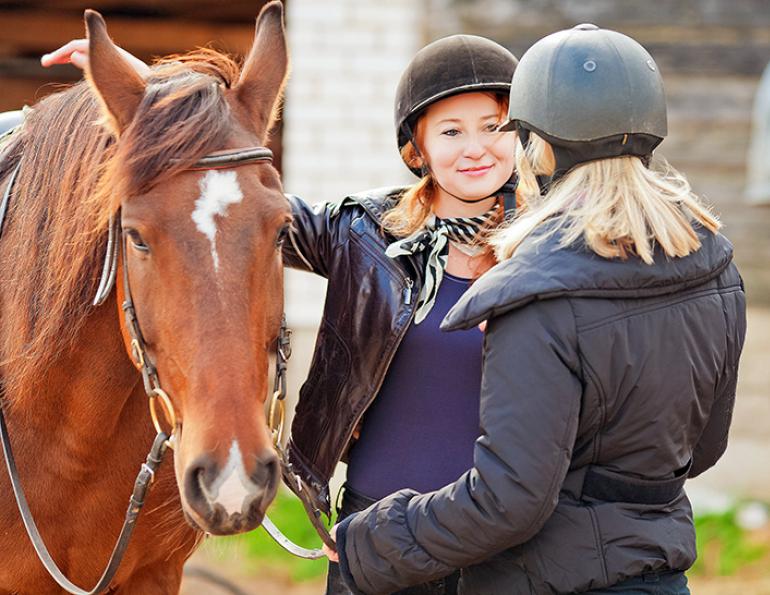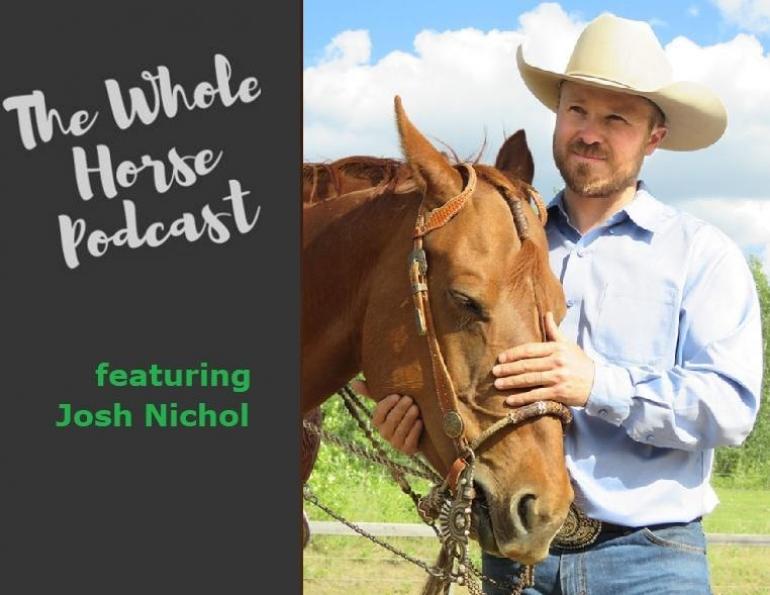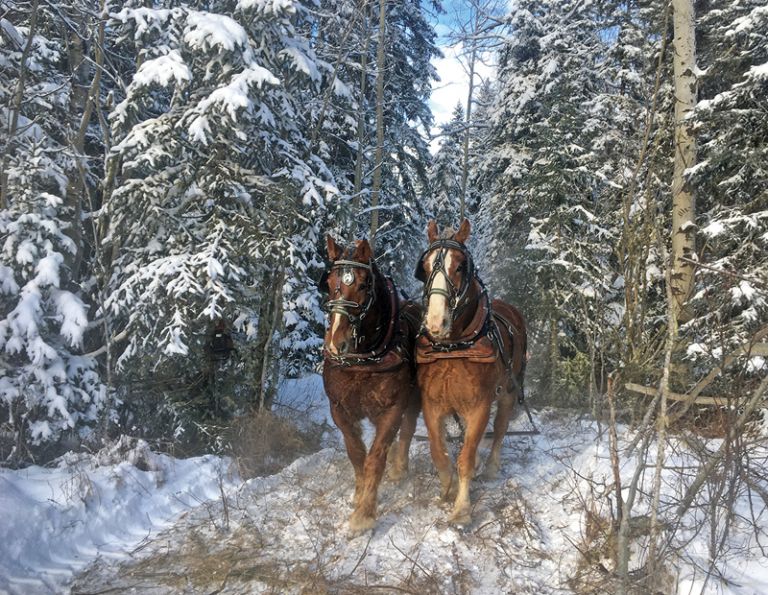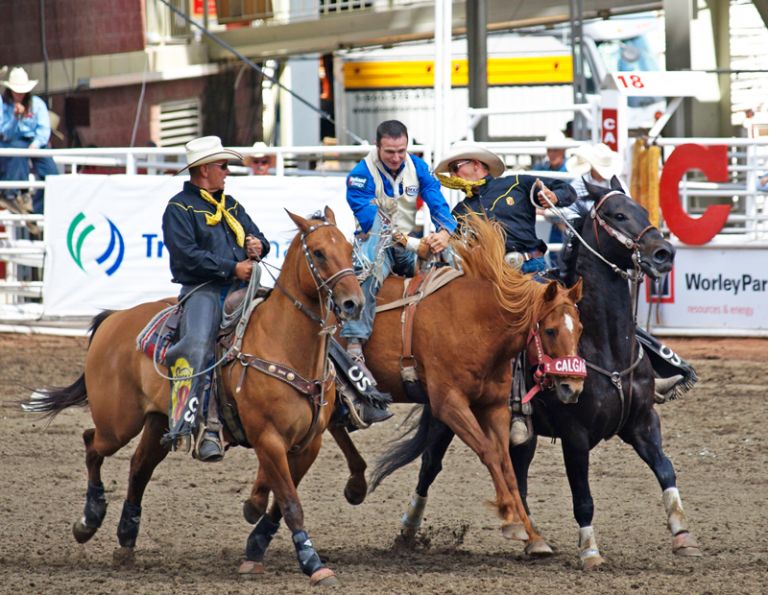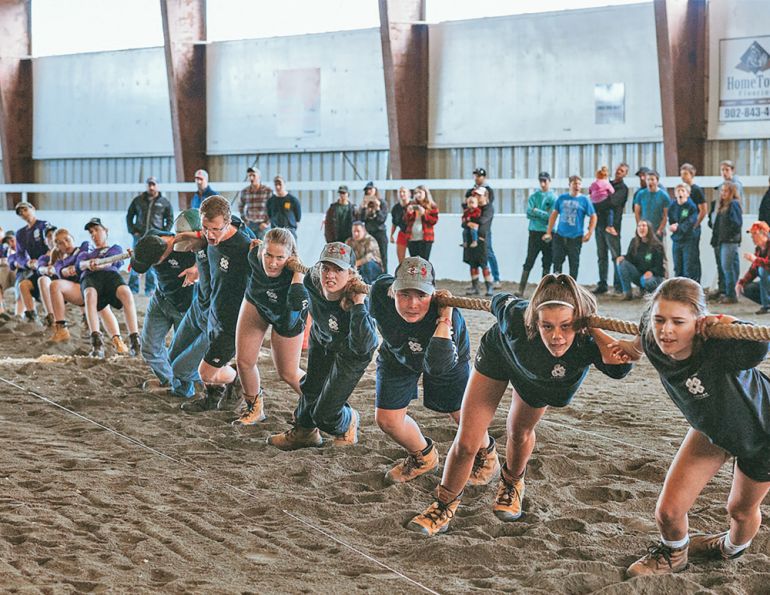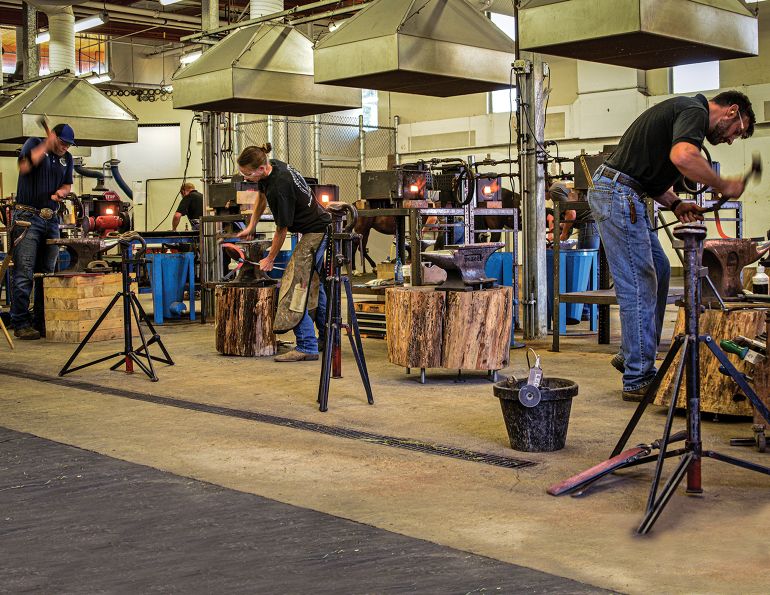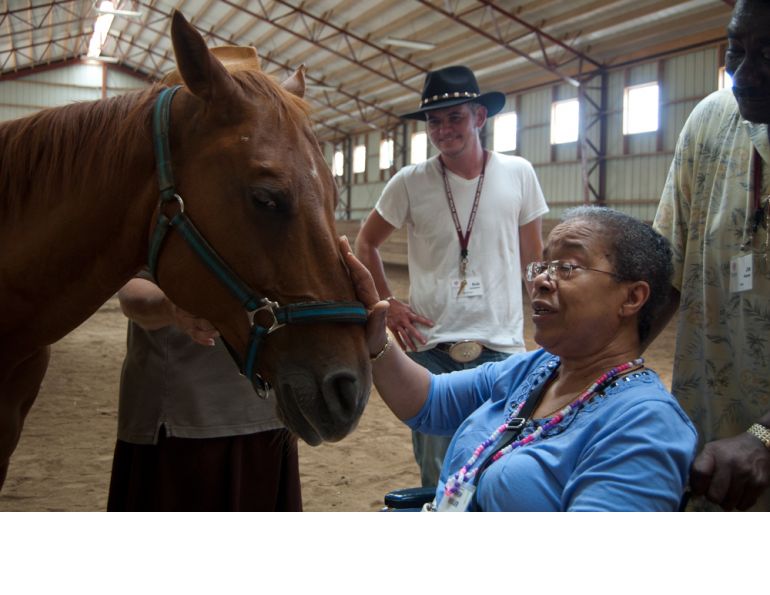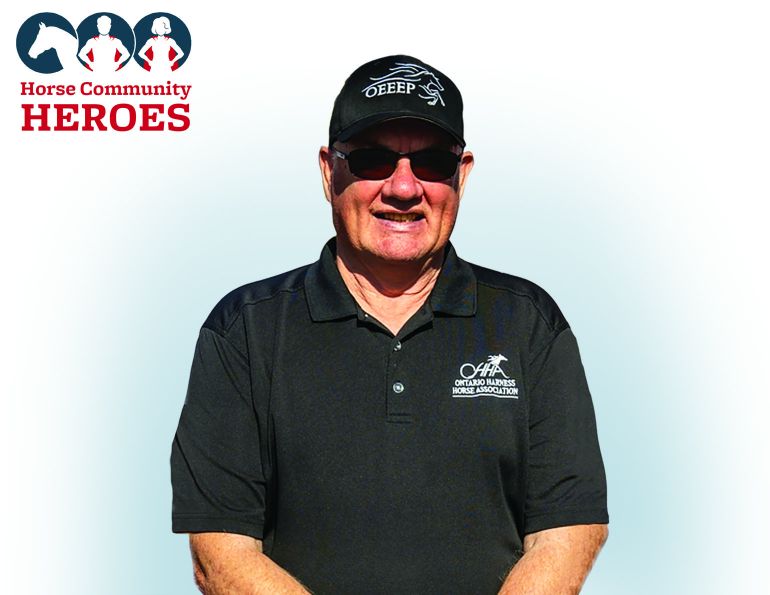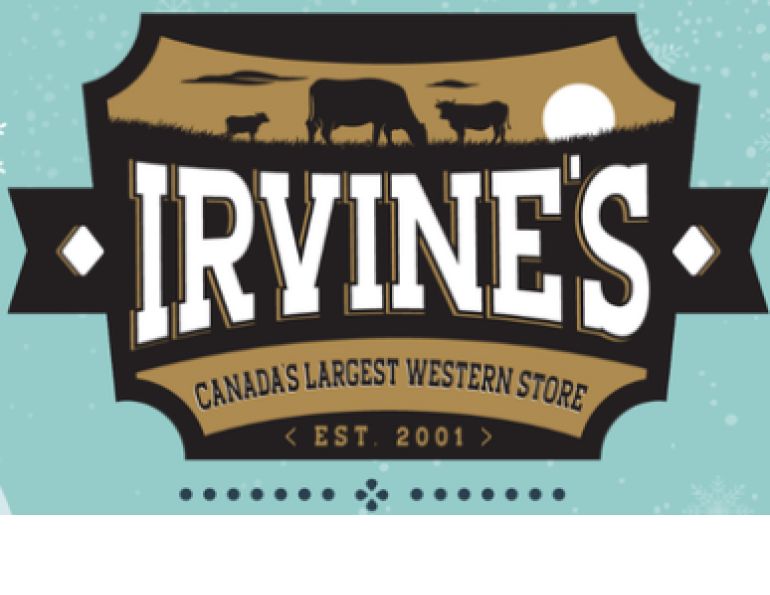Symposium addresses labour gaps and business fundamentals.
By Tania Millen, BSc, MJ
On November 21 to 23, 2023, students in the Bachelor of Bio-Resource Management (BBRM), Equine Management program at the University of Guelph in Ontario hosted their eighth annual Equine Industry Symposium. The theme of the free virtual event was “Stable Solutions.”
“The symposium aims to grow knowledge about horses and develop important relationships within the equine industry,” says Dr. Katrina Merkies, Associate Professor at the University of Guelph and organizer of the symposium along with university students. “Discussing industry issues without reference to any discipline is something which all industry members must engage in.”
Experts in Canada’s horse industry discussed current labour shortages, offered insight into business fundamentals and responsible decision-making, plus presented financial planning ideas.
Bridging the Labour Gap
Dr. Kendra Coulter was the first speaker and discussed labour gaps in Canada’s horse industry. Coulter is a professor of management and organizational studies at Huron University and the author of the recently published book Defending Animals: Finding Hope on the Front Lines of Animal Protection. Her presentation was based on personal observations and an October 2018 report she wrote titled Work in Ontario Horse Stables.
Coulter prefaced her talk by reminding attendees that our use of horses creates jobs and fuels economic activity, but that, “Horses are the foundation of the industry and are sentient beings. They have a capacity to think and feel.”
Her discussion focussed on frontline workers — grooms, stable managers, coaches, and owner operators. Within that cohort is the first labour gap: between employer needs and the existing workforce. Employers are challenged to recruit and retain staff, while staff are questioning job satisfaction. This push-pull between employers and staff is linked and reflects how skills are defined and valued. Stable workers are often considered unskilled, but nobody is actually “unskilled.”
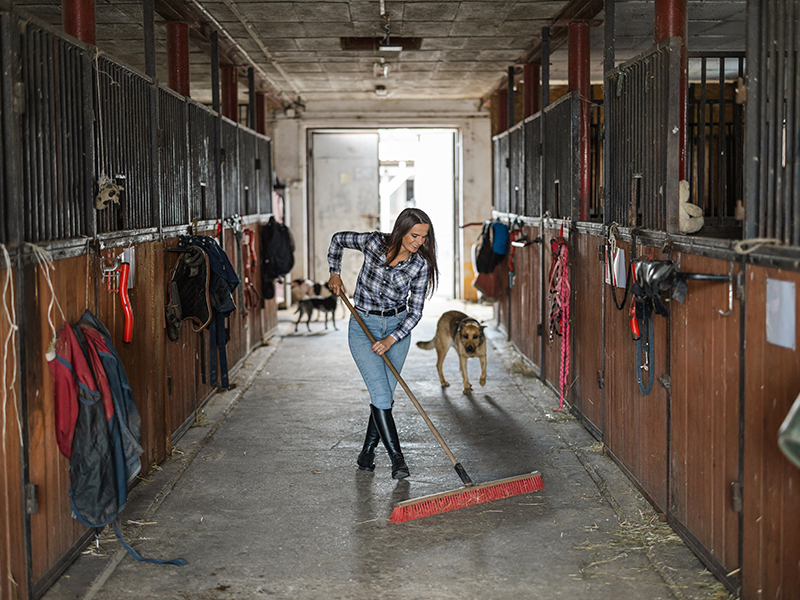
Barn workers, even those with horse experience, are often considered “unskilled.” But savvy business owners know that horse experience has value because it’s more difficult for employers to teach equine skills. The best in-barn staff are willing to learn, take direction, and work hard. Photo: Shutterstock/Pikselstock
“The industry needs to recognize that not just anyone can do this work,” says Coulter.
For example, grooms and stall muckers need specific physical strengths, sensitivity towards horses, and a broad understanding of horses as a species. Attuned stable staff observe and assess what’s normal (or not) for each horse. Staff must recognize what they’re communicating — such as when they’re feeling unwell or lame.
The second labour gap is between the expectations of stable workers and the realities of their job. Different people are motivated by different things. For some, external factors such as money and days off, are important. For others, internal factors such as respect, recognition, status from their workplace, or the rider they work for or an ethical sense of duty, are stronger rewards.
Related: Advocating for Horse Use on Canada's Provincial and Regional Trails
There’s no magic formula to figure out which rewards motivate each person. But when employers are recruiting, hiring, and managing, Coulter suggests they need to communicate clearly about their expectations, act professionally, use onboarding procedures, explain the importance of the workplace, provide reinforcing feedback, and adjust the external and internal rewards for each individual staff member, where possible.
“Horse welfare cannot be sacrificed as a cost-saving measure,” says Coulter.
Following Coulter’s presentation, Akash Maharaj, the former CEO of Equine Canada, led a panel discussion about practical aspects of bridging the labour gap. The panel included Alanna Berdan, Julia Howe, Lisa Vicaire, and Victoria Willan, all of whom are graduates of equine studies at the University of Guelph and are currently involved in operating equestrian facilities.
Panel members agreed that formal education in equine studies is useful for those wanting to work in the horse industry. Howe commented that horse sense is more valuable than business sense for those starting out, as it’s more difficult for employers to teach equine skills. Plus, a basic understanding of horses allows staff to relate to horse-owning clients, regardless of whether their job is working in a stable or an office selling insurance, for example.
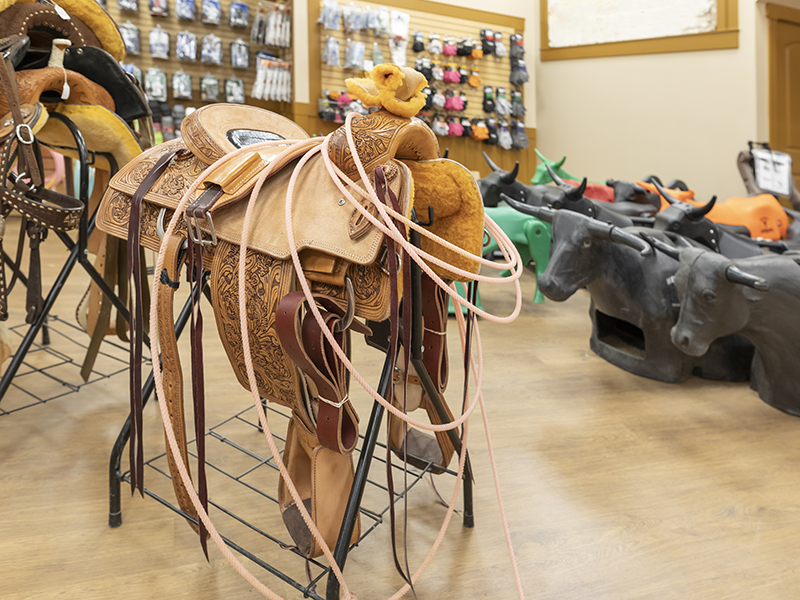
Regardless of their job in the industry, staff with a basic understanding of horses can more easily relate to horse-owning clients. Photo: iStock/DavidF
Berdan says that the best in-barn staff are willing to learn and take direction. Willan agrees, saying that ideal employees want opportunities to grow. Vicaire says that personal and social skills and adaptability are important, as staff need to be able to work with people any age. She also stated that the best staff are willing to get certified and are safety-minded.
As for how to find staff, Willan emphasized the need to make connections within the horse industry. Who you know can lead to hidden opportunities. Berdan says skills can be acquired on the job while working for different barn owners and trainers. Howe says there are myriad types of jobs in the horse industry and good ways to find out about them are to attend webinars and education courses. Horse jobs don’t just mean working in barns. There are many equine-related desk jobs that combine love of horses with a financially beneficial career.
Boosting Business Efficiency
On November 22, 2023, Joel Lalonde spoke about the six parts of successful business models in the horse industry. He owns Wynbrook Equestrian Center near Ottawa, Ontario and is the CEO of Your Credit Union.
“You do all of this work to create a business that is sustainable, that you can be proud of, that is achieving the vision you set for yourself, is purpose-driven, has an impact on others and serves the community you live in,” Lalonde says.
1. Owner/operator model
First, he described the most common business mode in the horse industry — the owner/operator — where the business owner also operates their business and often has multiple income streams, such as a rider, trainer, coach, riding program manager, and/or boarding facility manager.
“In some cases, the owner/operator model is essentially the creation of a job,” says Lalonde.
The owner/operator may or may not own the property where they operate, and the business can be difficult to scale up. They’re part of the service industry, deliver an experience, and their main asset is people.
2. Mission, vision, value proposition
These drive every successful business. The mission is the why, the foundational reason for the business’s existence. The vision is what you’re trying to achieve, while the value proposition translates the mission and vision into a service.
“To be successful in any business, you need to be able to answer these questions,” says Lalonde. “The why defines purpose, which defines motivation, and in many cases will drive you forward when things get rocky.”
Related: New Canadian Farrier Program Offers Journeyman Credentials
3. Beliefs and values
“You can’t be successful in business long term without a strong set of beliefs and values,” says Lalonde. “This is the soul of the business.”
Beliefs and values are foundational goal posts that staff and clients live by. For example, horse care may be first and foremost, and will not be sacrificed for short-term results.
4. Strategic outcomes
Strategic outcomes are a way of expressing goals to achieve the mission, vision, and values.
“They’re steps to take and key performance indicators showing you’re making progress towards your vision,” says Lalonde, explaining that clarity about outcomes doesn’t necessarily happen overnight. You may have to get to know the business and community, first, then tweak the strategic outcomes to ensure they align with the stated vision. A volunteer advisory committee can help keep the management team on track and support development of strategic outcomes.
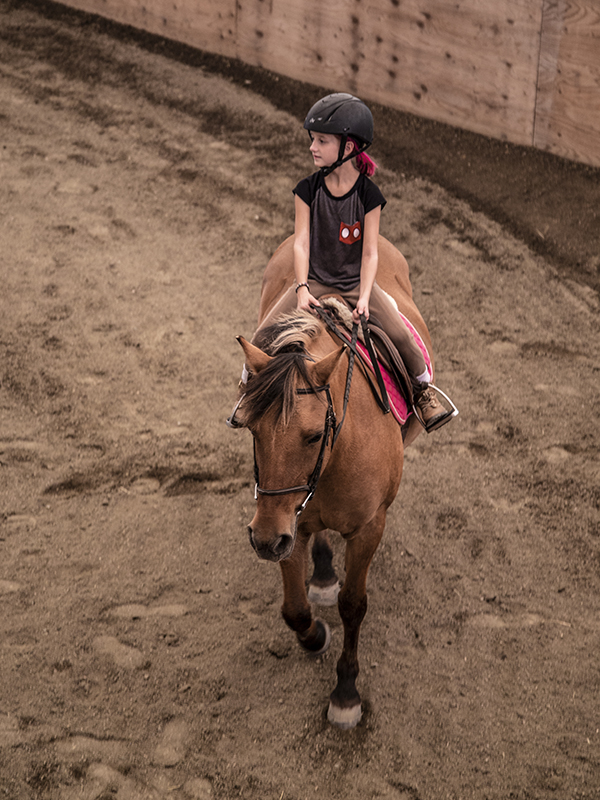
Coaching staff should be safety-minded and willing to get certified. Most parents assume that horse industry coaches are certified in a similar way to those at the swimming pool or skating rink. Photo: Lightguard
5. Tactical plans
“These are measureable actions and ambitions,” says Lalonde. “They need to be diverse, potentially including sales, service, and financials.”
Tactical plans provide simple, measurable, powerful targets, and can be as short as four months.
6. Business efficiencies
“When a business is efficient, not only does it provide better financial results, but it attracts people who have the same ambitions,” says Lalonde. Efficiencies can only be considered once the previous steps are in place. Altering plans to increase efficiency is what leads to sustainable business.
Finally, Lalonde addressed the challenging nature of operating businesses in the horse industry.
“If you don’t have relentless pursuit, determination, and passion for the business and work, then you might want to reconsider,” says Lalonde. “It’s a bumpy ride but probably the most rewarding journey you can ever take.”
Related: The 21st Century Cowboy
Funding Your Future
Next, Sean Jones provided a financial blueprint for those in the horse industry who are struggling to save money for their future. He’s a former show jumping competitor and coach in Palm Beach, Florida who is now a financial advisor with SunLife. Jones is on a self-prescribed crusade to inspire horse people to enhance their financial well-being.
“These are conversations that I have with non-horse people and traditional business owners all the time, but they aren’t being had frequently enough in the horse industry,” Jones says, emphasizing the importance of setting ourselves up for the future.
“You need to plan your exit strategy at the start of your business,” says Jones, explaining that business operators can ensure they have a stable financial future, using his SWAN formula.
Jones’ Sleep Well At Night (SWAN) formula of 70/20/10 dictates that business operating costs must be less than 70 percent of gross revenue, 20 percent of gross revenue goes into an emergency and upgrade fund, and 10 percent is saved for the future you.
“Getting to 70 percent for operating costs is difficult,” says Jones. “There’s always a pull on your money.”
To achieve this, he recommends using a budget, aggressive cost cutting measures, and raising rates to increase income.
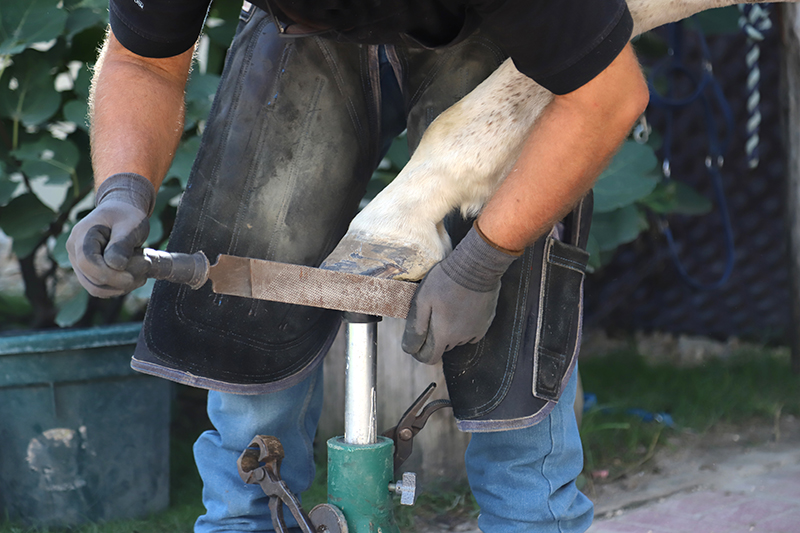
According to the Jones’ Sleep Well At Night (SWAN) formula of 70/20/10, business operating costs must be less than 70 percent of gross revenue, with 20 percent of gross revenue going into an emergency and upgrade fund, and 10 percent saved for the future you. To achieve this, Sean Jones says to use a budget, aggressively cut costs, and raise rates to increase income. Photo: Shutterstock/AcceptPhoto
Then 20 percent of gross income goes into a business account as an emergency and upgrading fund because he says, “What can go wrong, will go wrong.” Jones recommends having three months’ worth of operational costs in the account, and then adding funds for future upgrades, such as a new-to-you saddle or truck. The upgrade funds can also be used to accelerate debt repayment by paying off the smallest debts first.
Finally, 10 percent is saved in long term investments such as Tax-Free Savings Accounts (TFSAs), Registered Retirement Savings Plans (RRSPs), and Insurance Dedicated Funds (IDFs).
“This is for the future you,” says Jones. “Ten percent goes a long way. Time, compound interest and shelter from tax are your friends.”
This formula will provide enough money to fund a middle-class lifestyle at retirement age, without having to sell the farm property where the business operates, if it owns that.
Buying Into Business Fundamentals
On November 23, 2023, Dr. Coulter facilitated a panel discussion about challenges pursuing business fundamentals. The panel included Sean Jones; Bronwynne Wilton, CEO of the Wilton Group consulting; Helen Richardson, Provincial Stable Program lead at Ontario Equestrian; and Karl Lagerborg, senior manager of racing operations at Woodbine.
Here’s a summary of their discussion.
a. How do horse industry participants get ahead?
Build and foster good relationships. The barn down the road is not your competitor, they’re your colleague and friend. Work together, lift each other up, and share experiences.
It takes life experience to get some jobs — direct lines to jobs are rare and we all wear a lot of hats. Goals may change and change is okay. Doors open and close, so you never know what a position will lead to. Don’t get stuck trying to game out your life. Do something. You’ll figure out what you like and what you don’t, through action.
Related: Family Farms and Ranches
b. What does the horse industry need to pay attention to regarding horse welfare and climate change?
Everyone needs to show the public that horse welfare is imperative by ensuring that rules and regulations are met to protect horses. Keep an eye on the part of the horse industry you’re involved in and speak up.
Horse welfare may suffer if boarding barns and service providers don’t make enough money. They have to match inflation, at least, and may need to raise rates.
The rising cost of land and urban sprawl is eating into land appropriate for horse activities. We need to advocate for good farmland policies and work with the agricultural sector as they also need to protect land.
Climate change is now, but barns may not be ready for heat waves or unpredictable storms. More knowledge of biosecurity is needed to prevent the spread of diseases.
c. What business fundamentals do we often neglect?
The horse industry is very traditional. We need to be open to new opportunities. They can improve your business and grow it to a different level. Admit there are things you don’t know and bring in experts for help.
Financial literacy and financial management of equine business is typically not strong. The agricultural sector is ahead on this, and there are programs for farmers, so collaborate and check out their programs.
Clients and parents of riding students are often just considered “wallets.” But they can be great friends and professional resources. Cherish and embrace your relationships.
Businesses need to pay more, to keep people in the industry.
d. What does the equine industry do right, with regards to business fundamentals?
Horse people are passionate about their horses and advocate for them.
Involvement with horses develops discipline and commitment. There’s no instant gratification. That means kids who grow up riding become great workers and driven professionals.
Related: Unsung Heroes of High Performance Horse Riders
e. How do you respond to concerns regarding the effect of raising service prices, such as boarding or lesson rates, on everyday access to horses?
It is up to the equine sector to figure out how to make horses accessible, such as having programs for kids to enter the sport. School programs and summer camps can provide beginner riding lessons for non-horse owners. More people need to incorporate these programs into their own programs to build future clientele. Work with organizations that have programs in place.
It’s not a business owner’s job to ensure easy access to horse sport. Stop being the starving artist, the altruistic person. You’re in business and have to make money.
Don’t be afraid of losing clients. Communication is key. Explain why you’re doing what you’re doing. Be a professional and bill for all of your time.
f. How do we ensure that Safe Sport is taken seriously?
Unlike other sports, horse activities generally occur on private property, so Safe Sport is new to a lot of people in the industry. There is an assumption by parents that coaches are certified in a similar way to those at the public swimming pool or skating rink. But in horse sport, coach licencing is not mandatory. It’s time the horse industry thinks like other sports such as tennis, hockey, or soccer. Horse industry businesses need to ensure safe practices are being met.
The organizers of the symposium then thanked their speakers and all the participants and that concluded the eighth annual Equine Industry Symposium.
The 2023 Equine Industry Symposium is available free on Youtube - click here to watch.
More links:
Related: Looking for Work? Canada's Horse Industry Has Endless Job Opportunities
Related: 10 Tips to Help You Build a Better Barn Business
Main Photo: iStock/Bear2016




